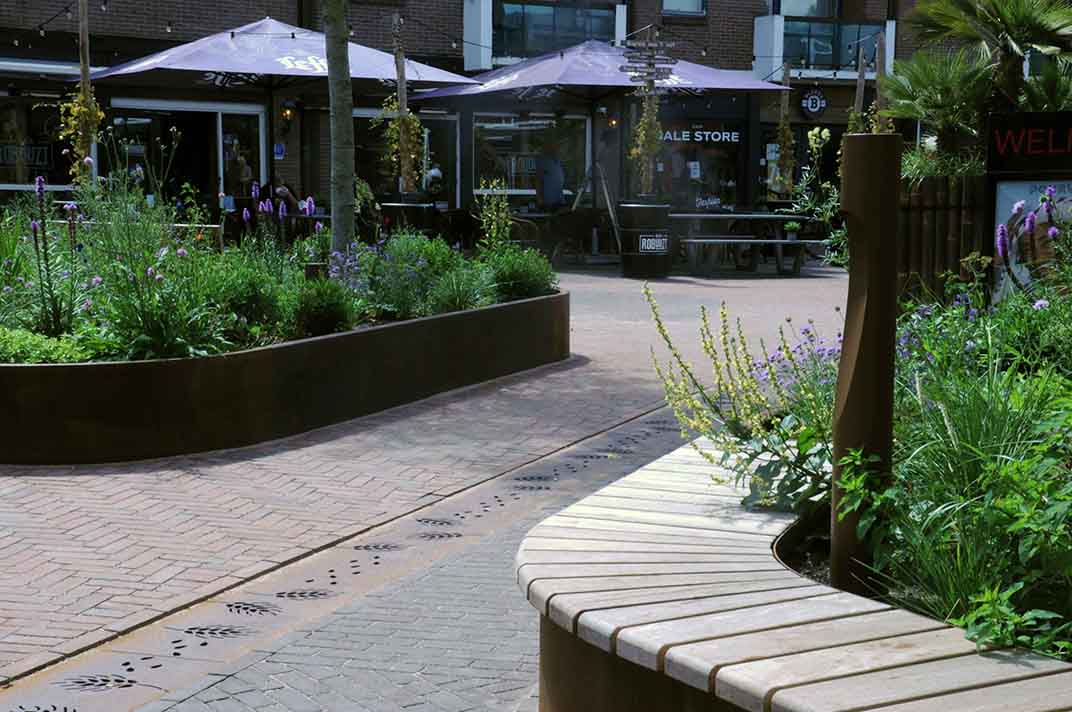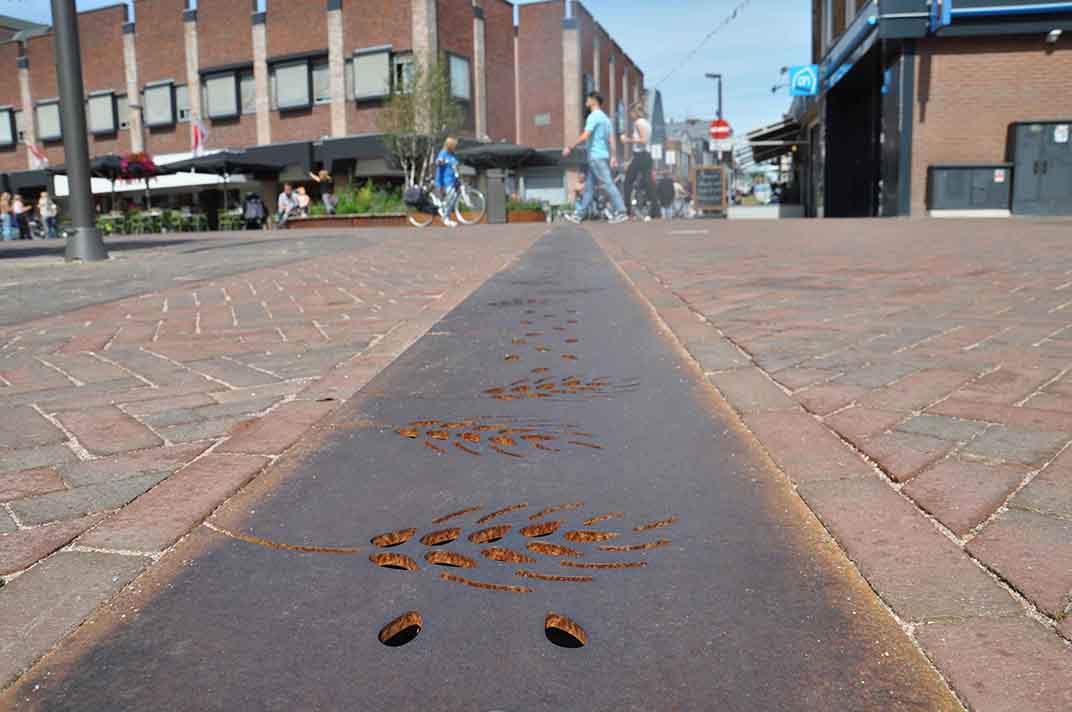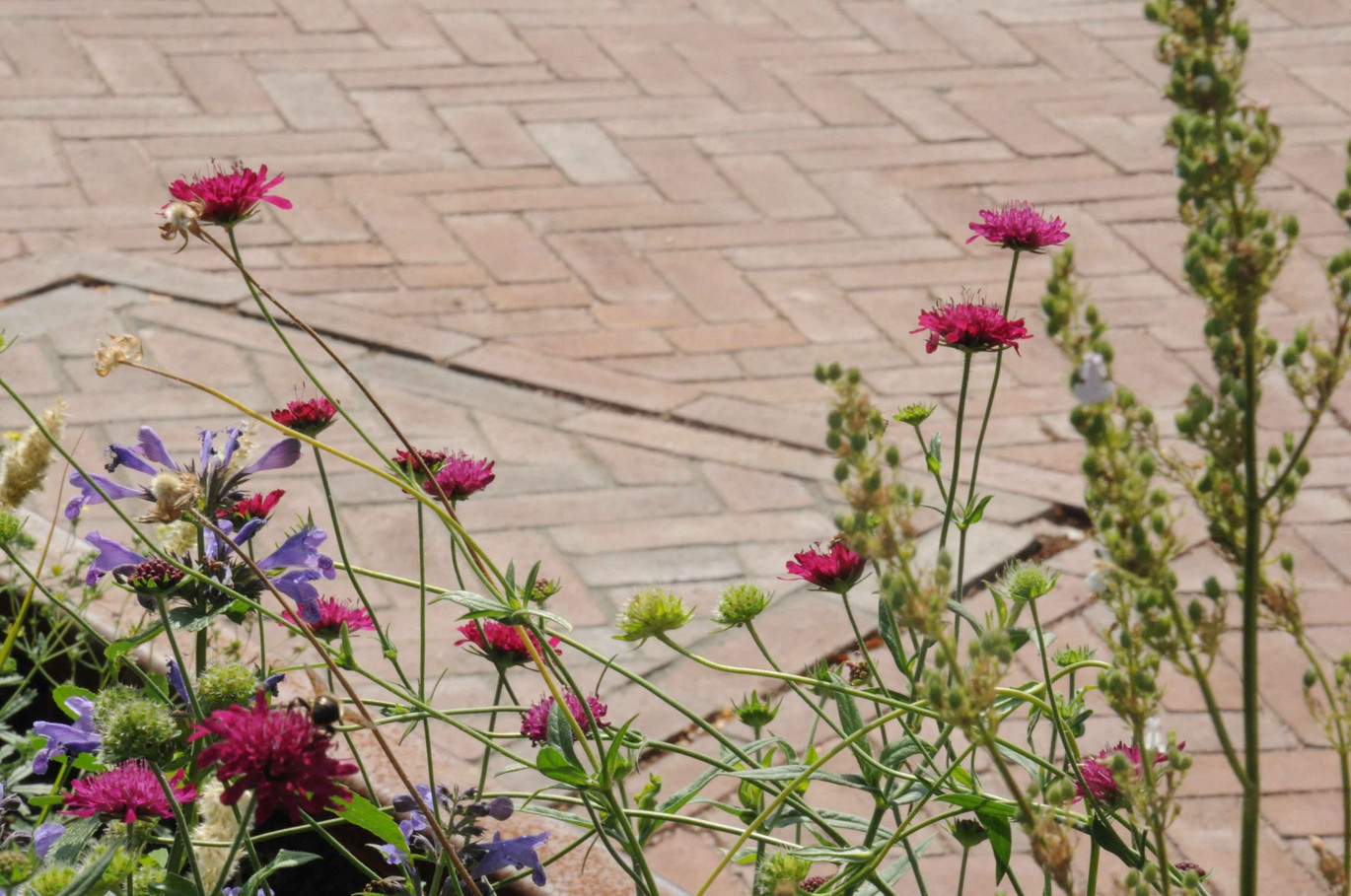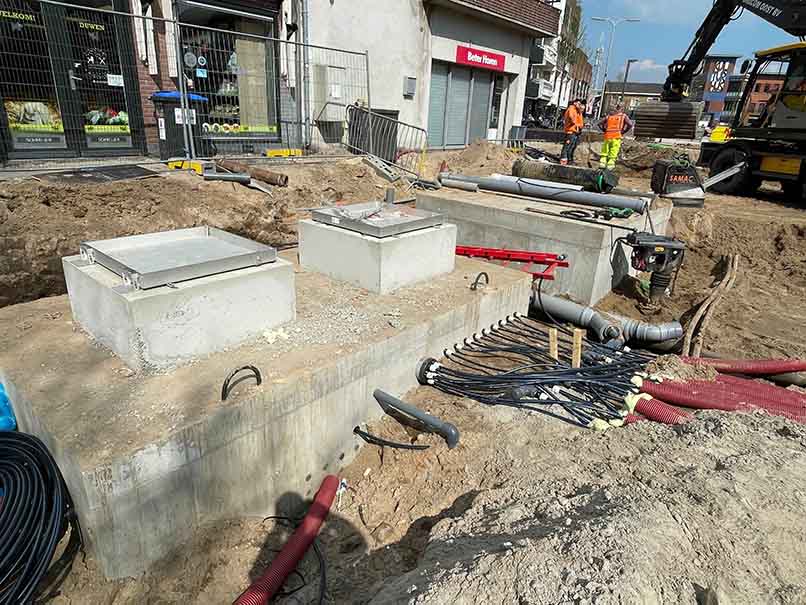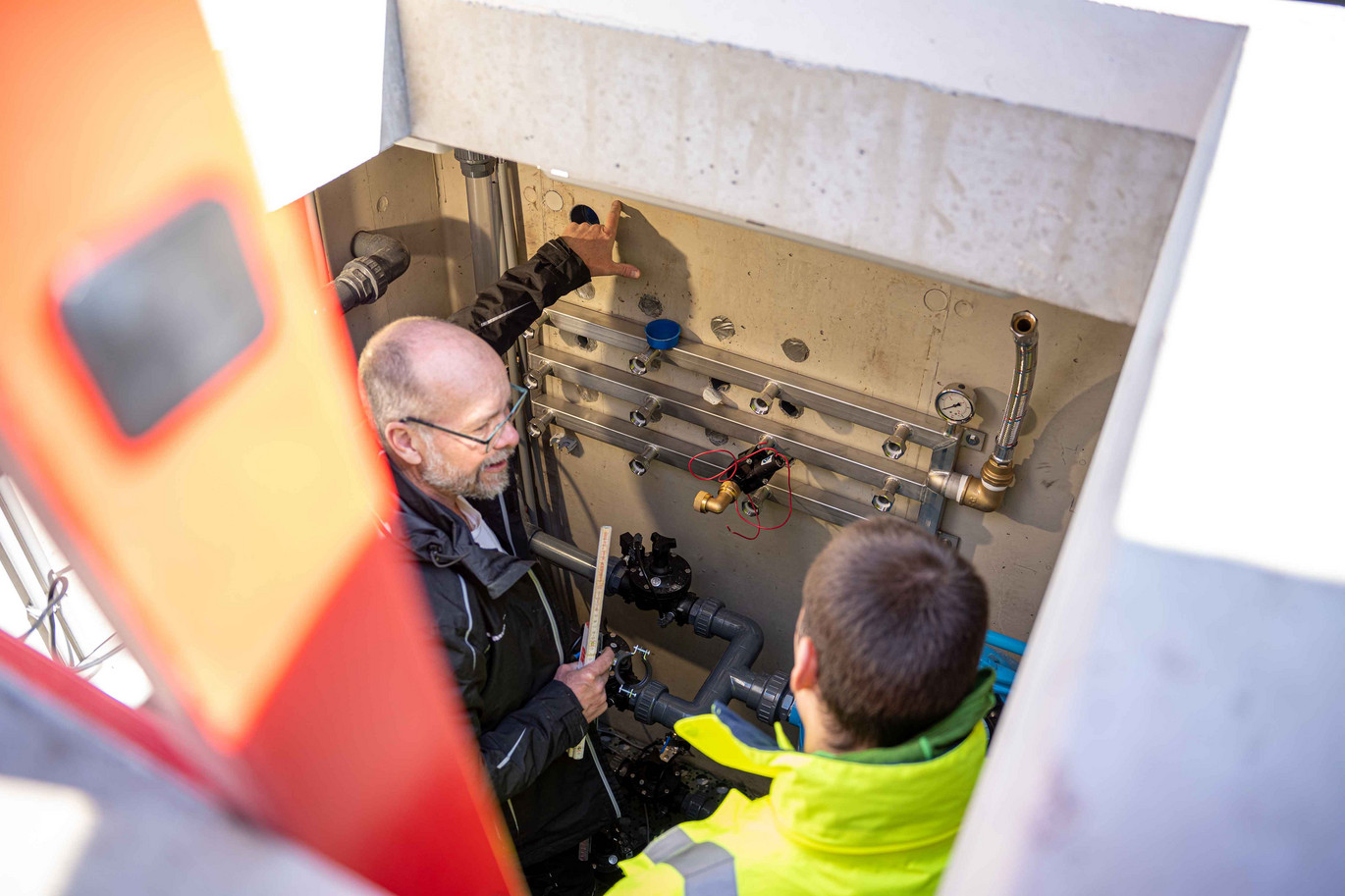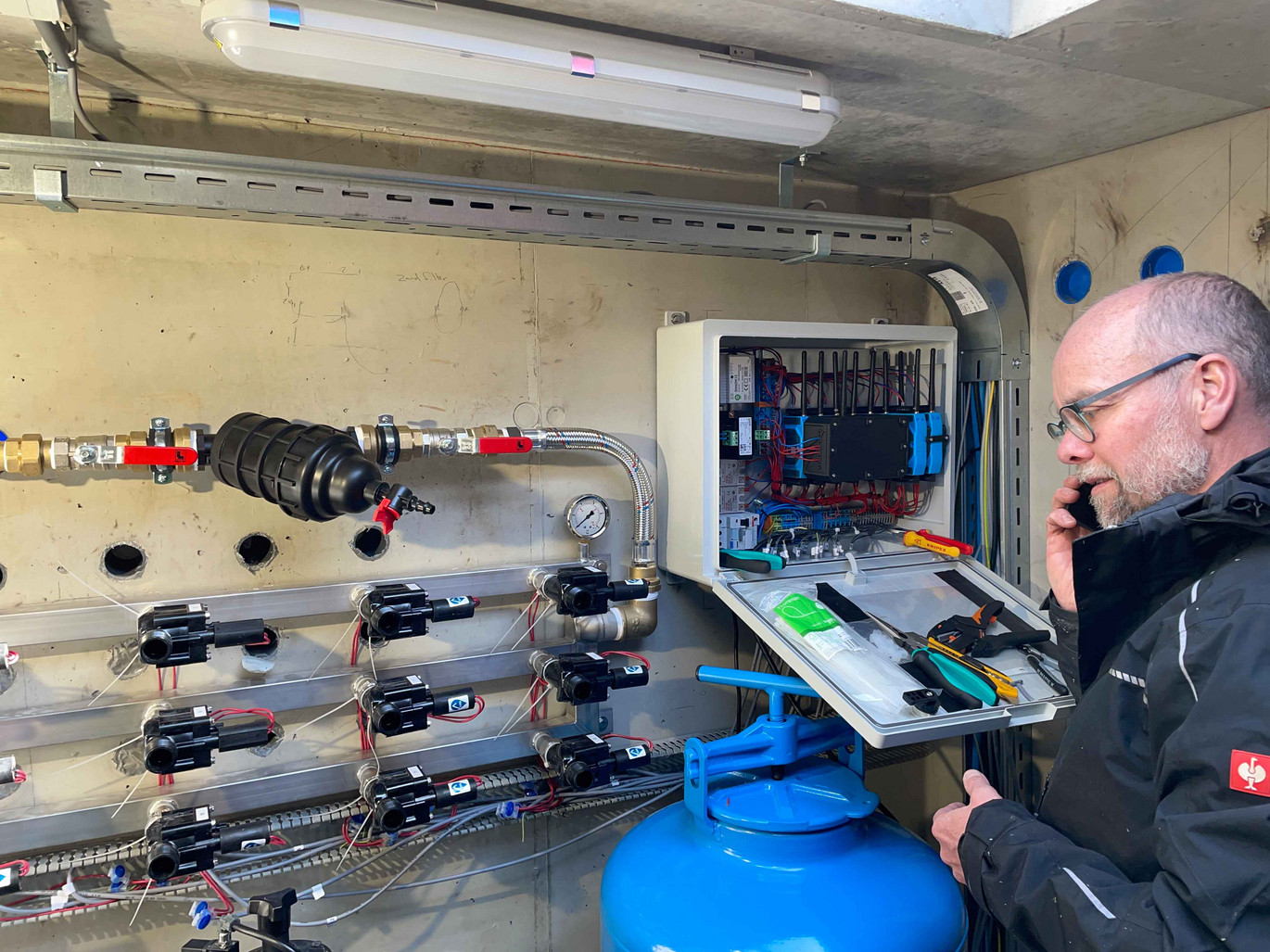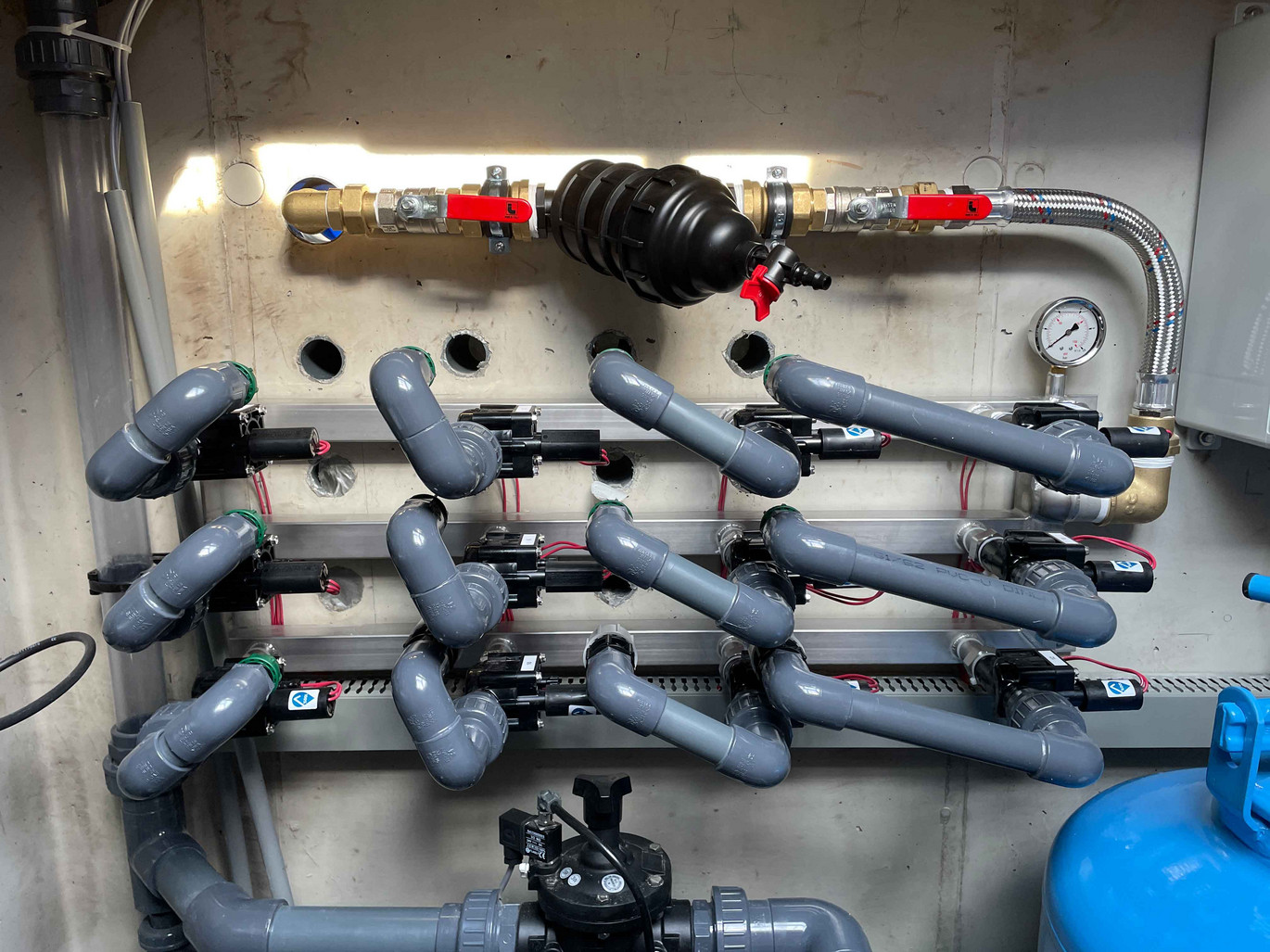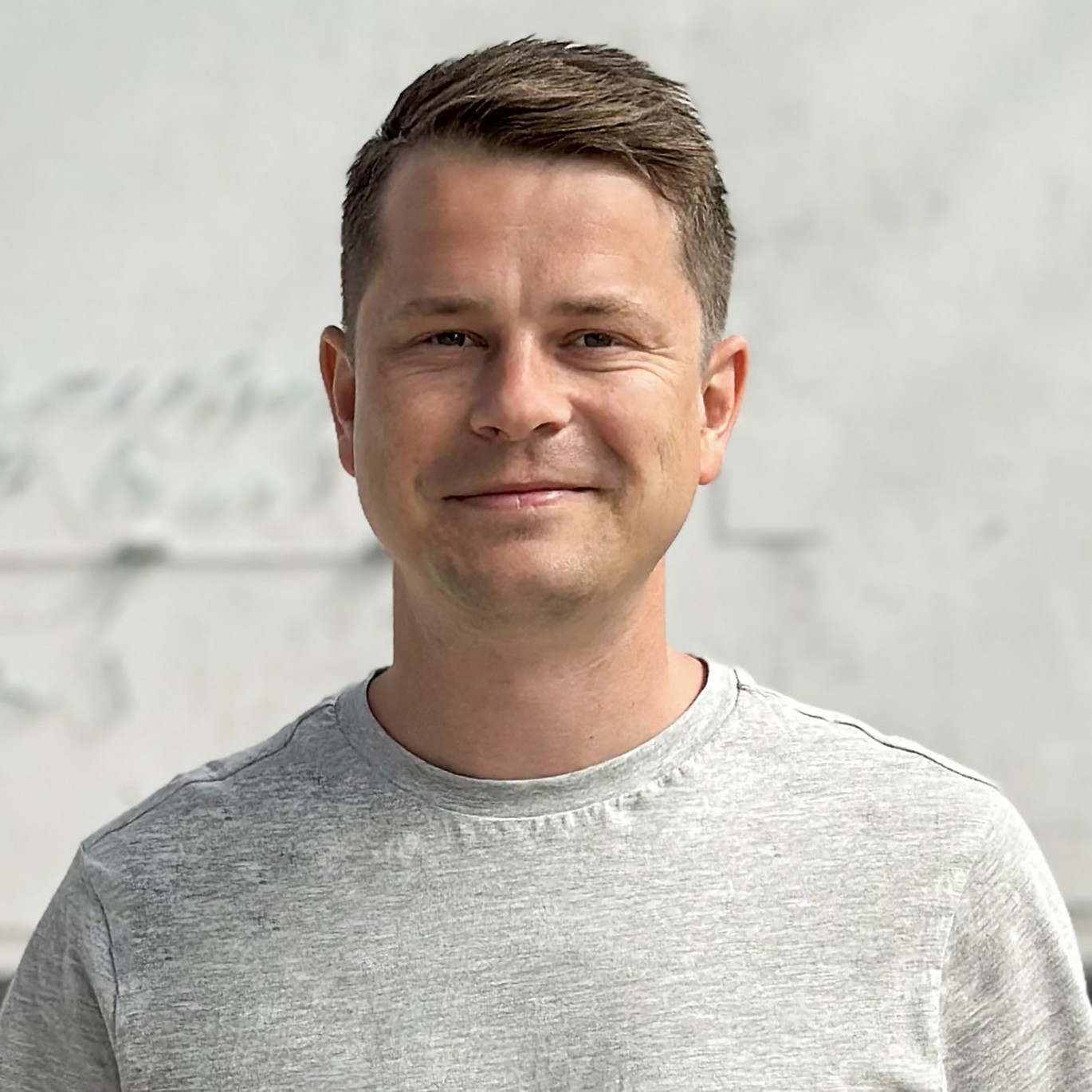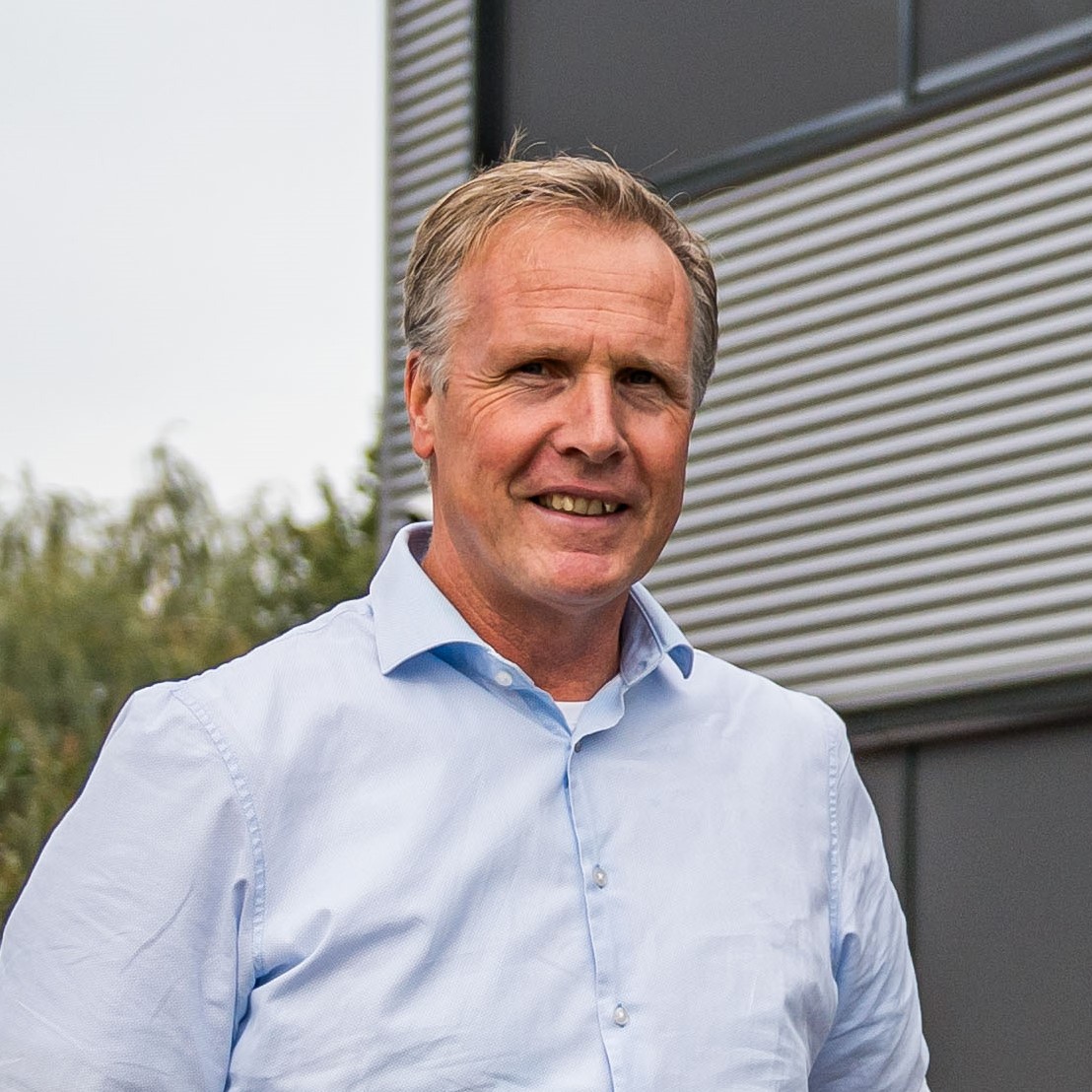Urban trees can significantly influence the microclimate. They not only create an appealing atmosphere but also help mitigate the effects of climate change. While stones and asphalt heat up significantly, trees provide shade and act as water reservoirs, thereby having a substantial impact on near-surface air temperatures. They produce oxygen, capture fine dust, purify the air and absorb sound. Moreover, sealed surfaces can lead to flooding, whereas planted areas allow rainwater to infiltrate, relieving the drainage system.
Therefore, it is of great importance to integrate urban trees and tree infiltration ditchesas retention spaces that can be planted into stormwater management concepts when planning neighbourhoods, whether in new construction or existing areas. This is the only way to ensure sustainable and healthy urban greenery. Urban trees must cope with challenging living conditions, as they require a lot of water to grow and thrive.
Current irrigation concepts, such as watering by municipal employees, not only incur high costs (vehicles, fuel, maintenance, labour costs) but also result in unnecessary CO2 emissions, noise and traffic obstructions – not to mention that it is becoming increasingly difficult to find personnel for such tasks. Blue infrastructure aims to retain rainwater instead of draining it. This allows the water to evaporate, thereby cooling the surrounding area, or to slowly infiltrate, water plants and contribute to groundwater replenishment. So why not use rainwater instead of precious drinking water for watering trees and plants?
With a new research project, the company ACO has developed a smart tree irrigation system. This digital system ensures efficient and sustainable watering of urban trees by irrigating them fully automatically and according to their needs, using only as much water as necessary. The first public project to use this new system was implemented in Raalte, Netherlands. There, 12 tree areas were built and planted, which are irrigated fully automatically. They are equipped with various sensors to collect data on soil moisture, water level, temperature, air pressure and other factors to determine the needs of the local plants and trees. If it is too dry and the plants need water, the water supply is individually activated via supply lines in a specially installed underground technical room. When it rains, the water is collected and directed to a storage basin through an aesthetically designed drainage channel, where it is stored for dry periods. Once set up, the system works completely automatically. The data can be accessed and controlled digitally.
The system works for both newly planted and existing trees.
